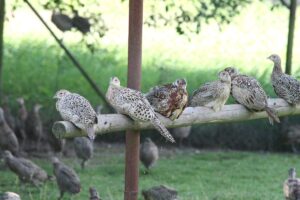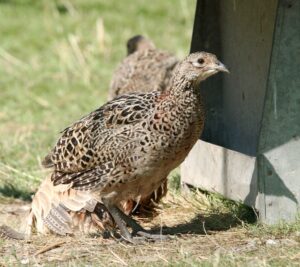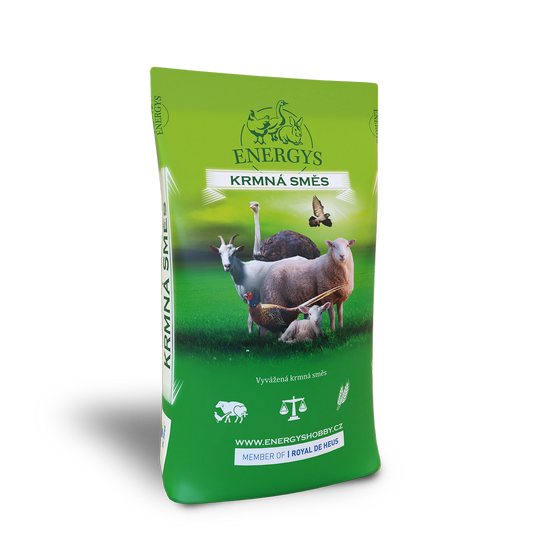Rabbits
Poultry
Laying hens
Quails
Guinea pigs
Pigs
Ostriches
Sheep and goats
Pigeons
Pheasants
Forest animals
Breeding of non-traditional poultry species – pheasant and partridge
In this article we will look at other non-traditional poultry species – we will take a closer look at the rearing and fattening of pheasants and partridges.
Raising pheasant on farms
Both pheasants bred in traditional pheasant farms and birds from farms are used for hunting. The basis for successful rearing of pheasants is sufficient space, healthy drinking water and quality feed.
The hatched pheasant chicks are sent to prepared nurseries on bedding made of crushed straw, where they are initially kept in circles under electric radiators. The temperature is maintained at between 35 and 36 °C under the source, and about seven to eight degrees lower in the house. From the third week of rearing, the temperature in the house is gradually lowered and the pheasants are released into the enclosure. From about nine or ten weeks of age, the chicks can be outdoors permanently. Rainy weather is a risk for the survival of young pheasants.
Pheasant chicken nutrition is based on special mixtures with a higher proportion of animal protein. The special prestarter feed mixtures for the youngest chicks are followed after two weeks of feeding by granular Bž1, which is gradually replaced by Bž2 and Bž3. The mixtures for the youngest category of pheasants contain coccidiostats, which serve as a prevention against coccidiosis. Adult birds are given crushed cereals, mainly wheat. In addition, green feed is provided.
The pheasants selected for breeding are kept in a common nursery over the winter and released into small aviaries in spring, usually in a ratio of one cock to six hens. At the same time, they are given a special pheasant mixture for laying hens and the proportion of essential minerals and vitamins is increased. Shortly afterwards, the birds begin to lay eggs.
However, it takes fourteen to twenty-one days before the hens are distributed and the necessary number of eggs are collected for deployment. Therefore, the first hatching is a test hatch, the next hatches are a week apart. Of the total incubation period of 24 days, the eggs are placed in a pre-hatching room with a temperature set at 39,5 °C to 39,7 °C and a relative humidity of 86 % for 21 days. Hatchability is usually around 75 %.
Partridges belong in the agricultural landscape
The field partridge prefers agricultural landscapes with fields, grasslands, scrub and small copses. However, this formerly common bird is critically endangered, which experts attribute to intensive farming, which has eroded the original habitats in the fields that provided the partridge with a varied food supply, suitable nesting conditions and protection from predators.
The reintroduction of the partridge into our nature was initially the main effort of hunting associations, but their intention was gradually followed up by breeding enthusiasts. Only a handful of breeders, who must have the appropriate permits, are breeding them for the purpose of introducing them into the wild.
 The field partridge is a monogamous species, meaning that the cock and hen form a pair and care for their young together. As partridges are very territorial during the breeding season, the birds overwintering in the communal aviary are moved in pairs to the box cages in mid-March, where they stay for about three months. An average of thirty eggs are produced per pair.
The field partridge is a monogamous species, meaning that the cock and hen form a pair and care for their young together. As partridges are very territorial during the breeding season, the birds overwintering in the communal aviary are moved in pairs to the box cages in mid-March, where they stay for about three months. An average of thirty eggs are produced per pair.
The chicks hatch in twenty-four days and are moved to a nursery under a heat source. The nurseries are connected to aviaries covered with grass and herbs, which provide the partridges with shelter. At the same time, this effectively reduces the risk of stress for these shy birds. However, chickens should also have sunny areas for moulting and basking. The chicks are able to fly as early as one month after hatching, and they molt into adult plumage after two months of age.
The diet of the chicks is initially based on complete mixes for pheasants, which are gradually replaced by cereals, mostly wheat. It is important to provide the birds with grit (river sand) and sufficient water for watering. Adult partridges are fed cereal grains all year round. In season, their diet is enriched with green feed (e.g. cut grass, lettuce, alfalfa or nettles). In winter, the ration of farmed partridges also includes shredded fodder beet and alfalfa hay.
Related posts
9. February 2022
In this article we will look at other non-traditional poultry species – we will take a closer look at the rearing and fattening of pheasants and partridges.
Related products

PHEASANT REPRO
A granulated feed for pheasant breeds and partridges. Thanks to a higher content of certain substances it supports fertility and higher hatching.

PHEASANT MAXI
A granulated mix for weaning and fattening pheasants and partridges from 6 weeks of age. It ensures perfect condition of the animal.

PHEASANT MINI FORTE
A ground mix intended for the weaning of young pheasants and partridges up to 5 weeks of age. The nutrients contained in it support fast growth. The feed contains coccidiostats.
